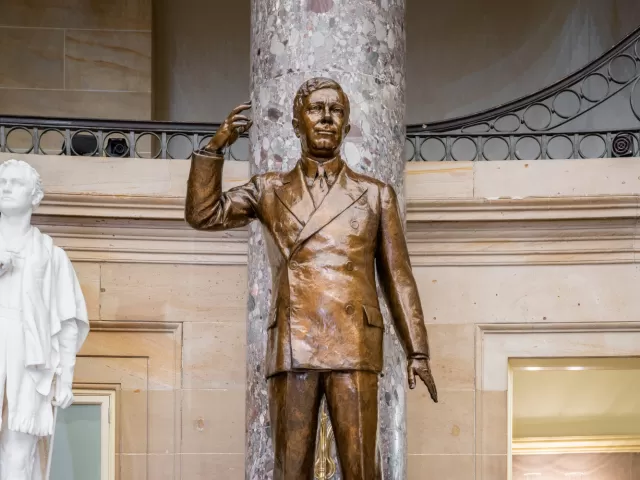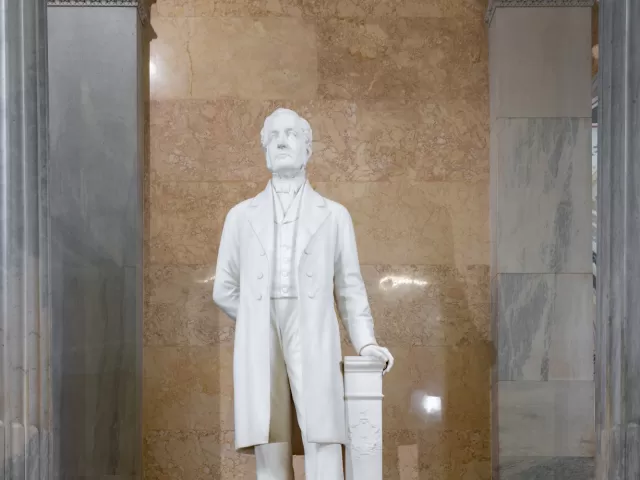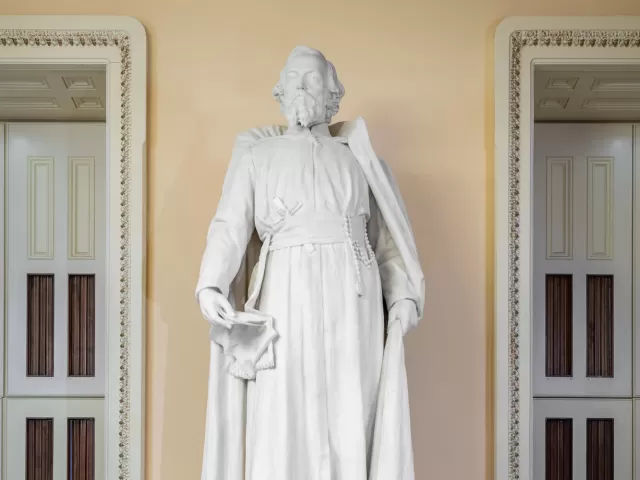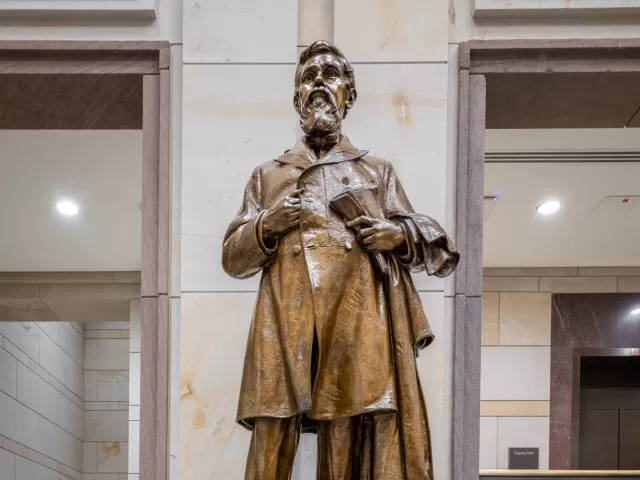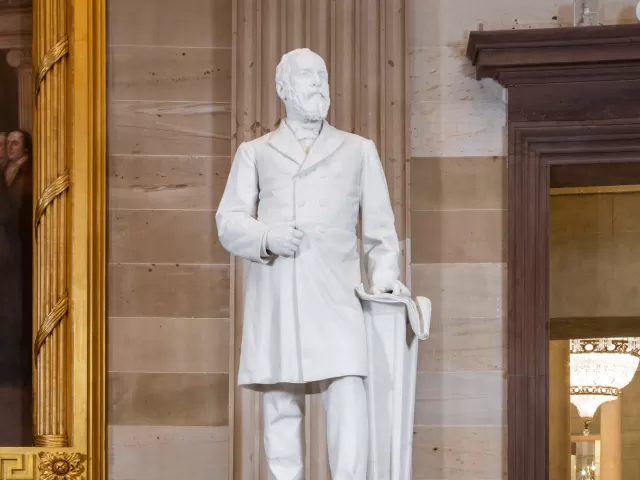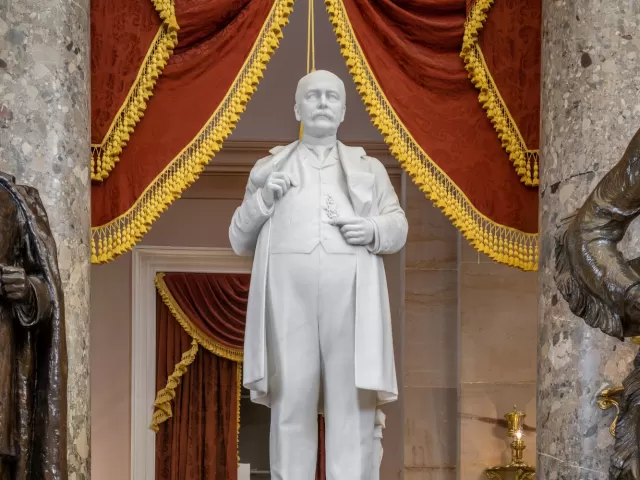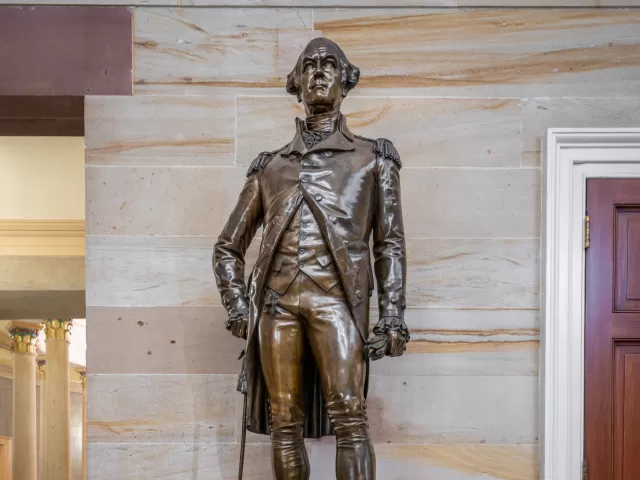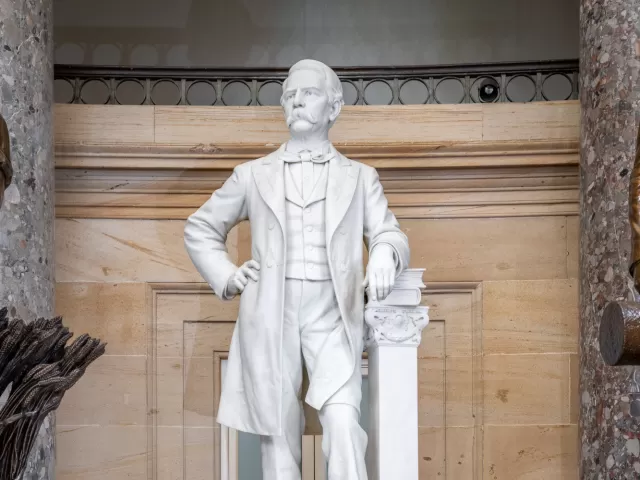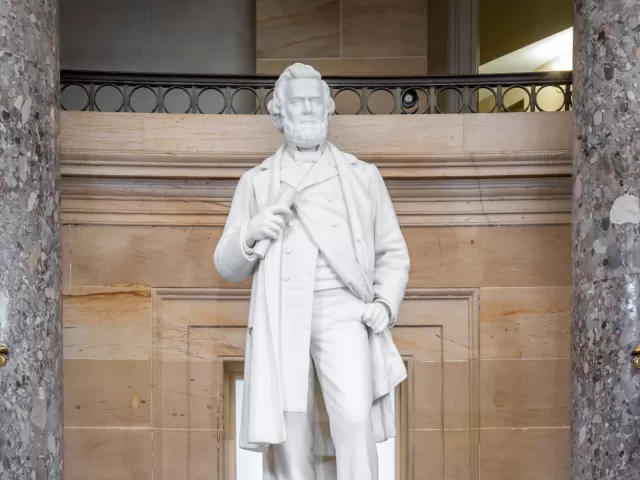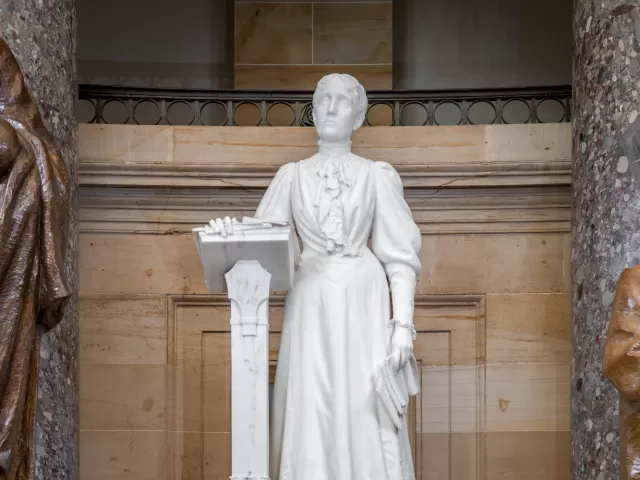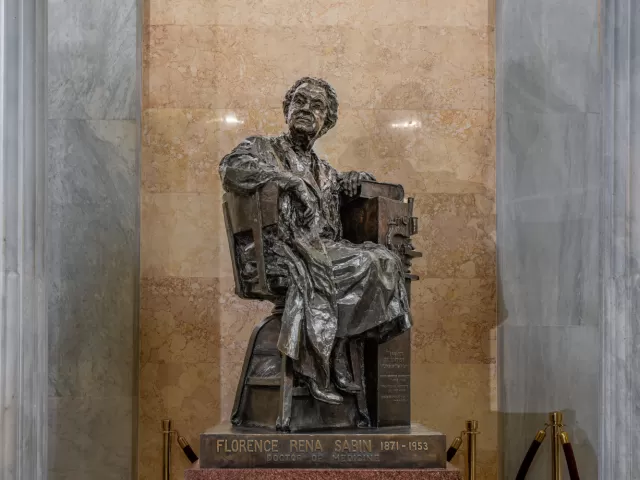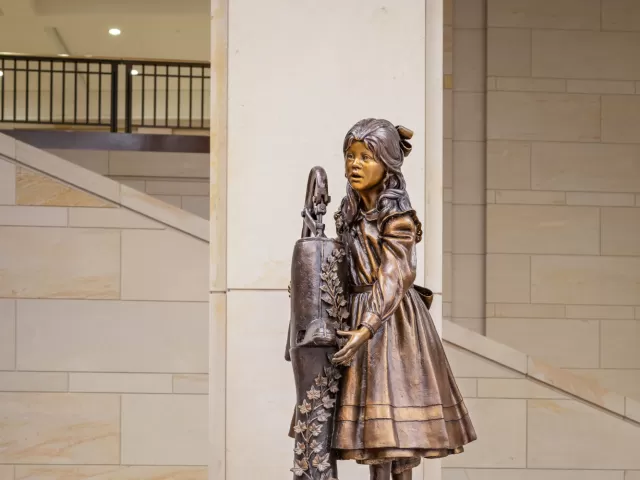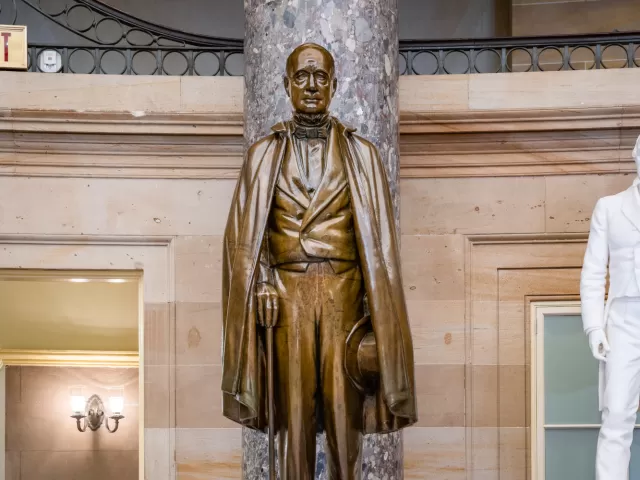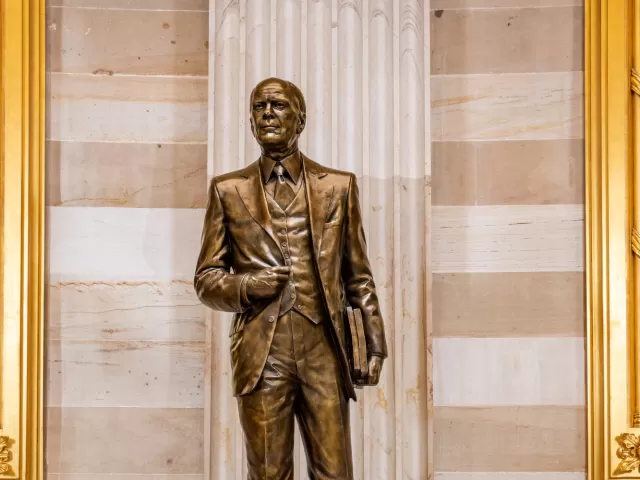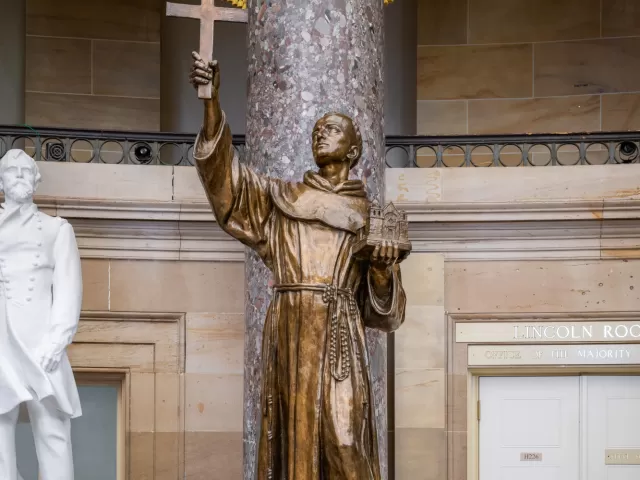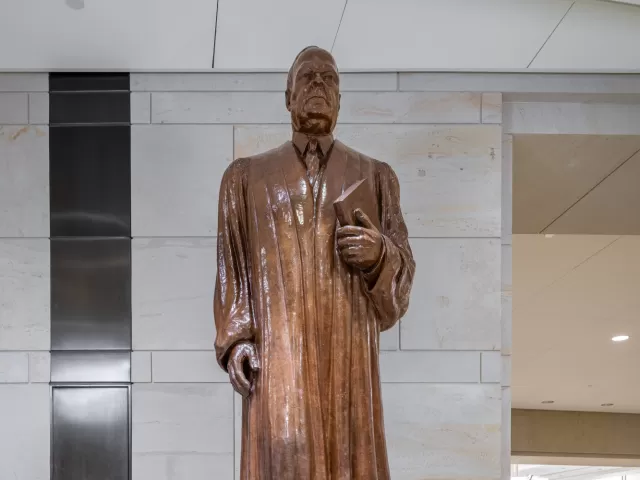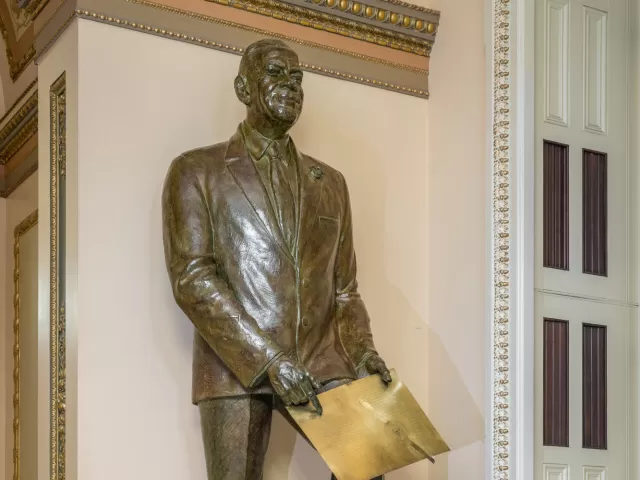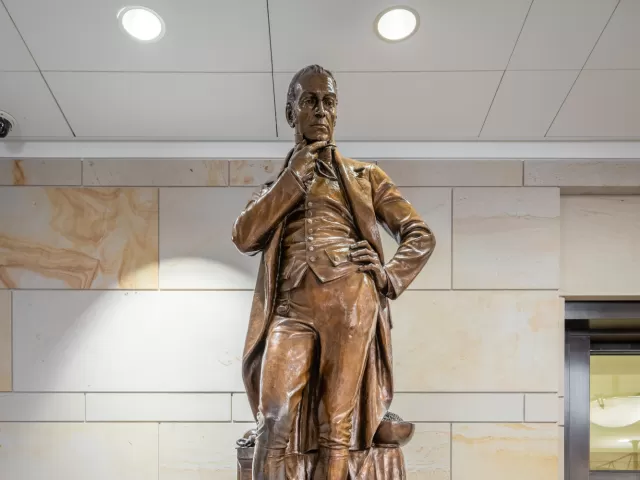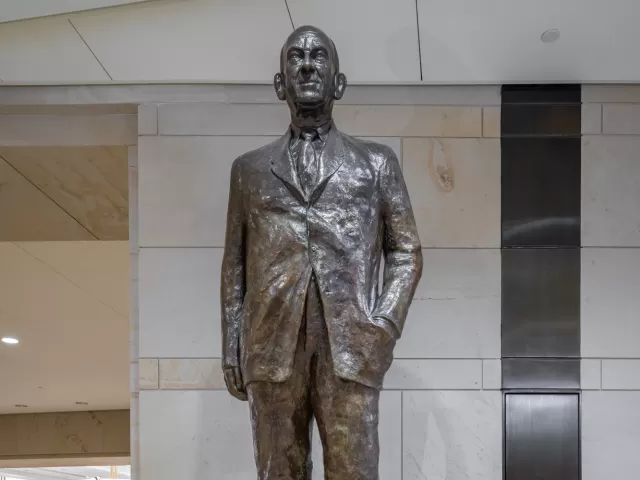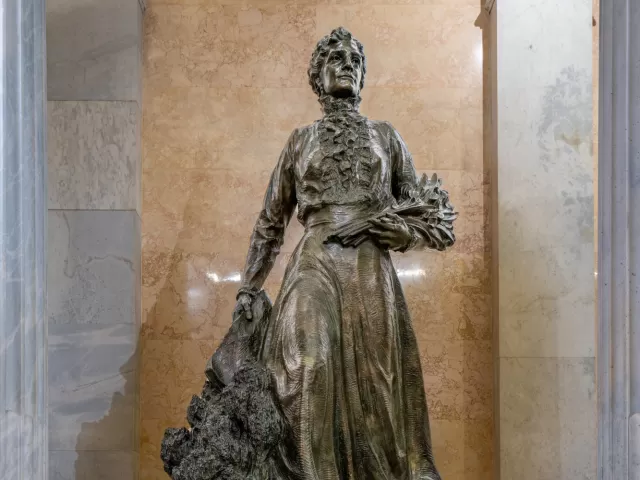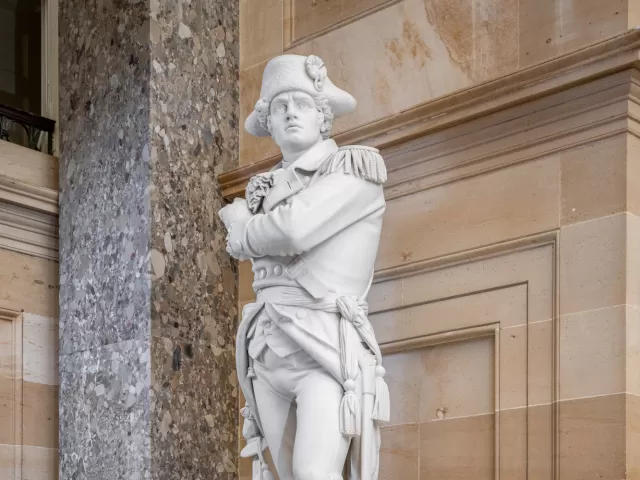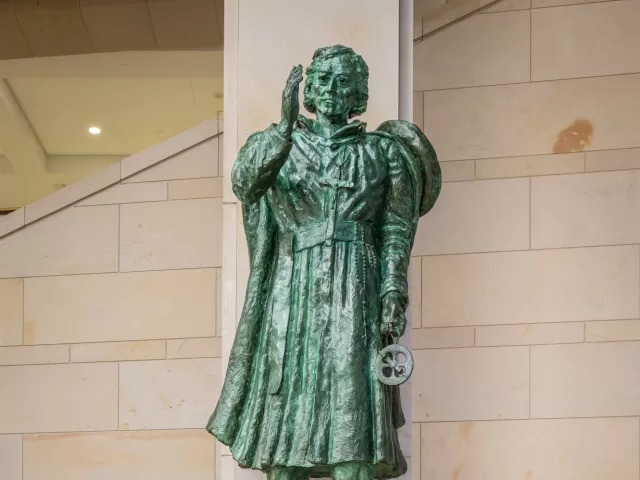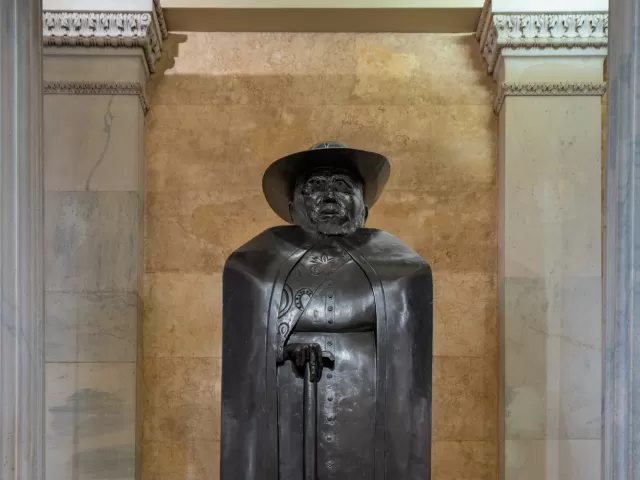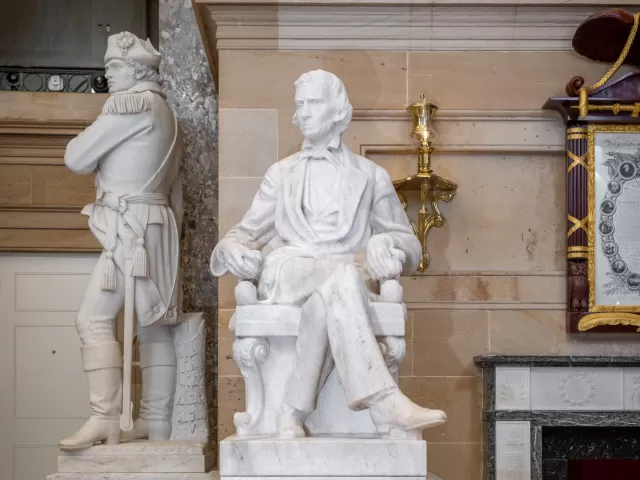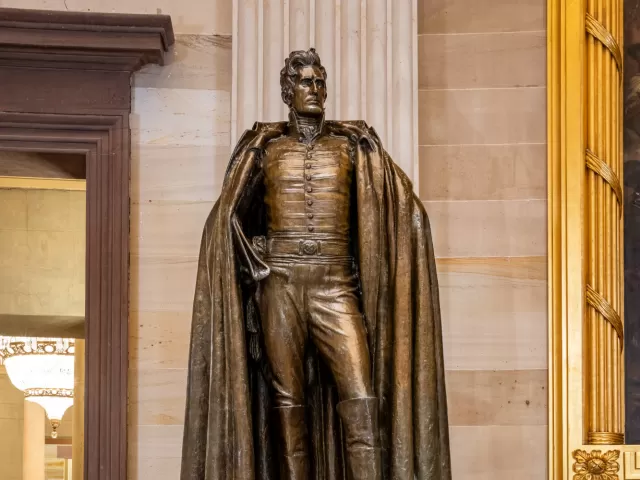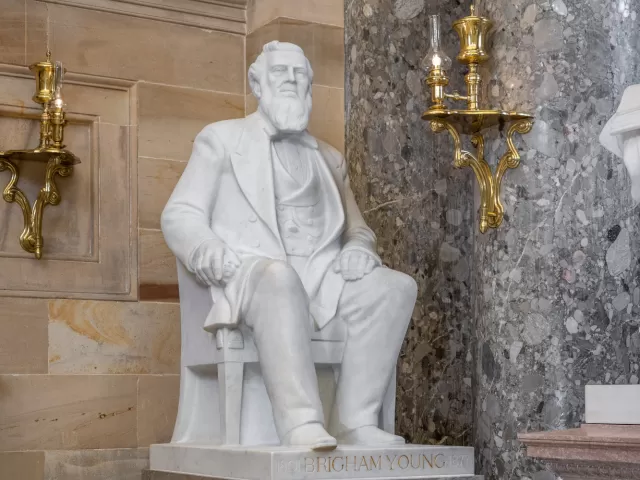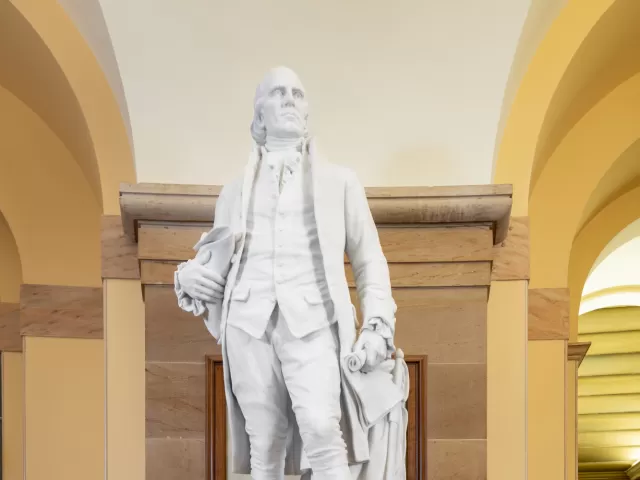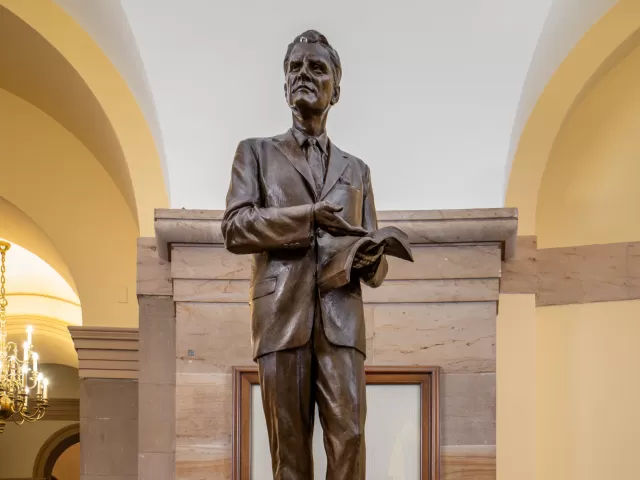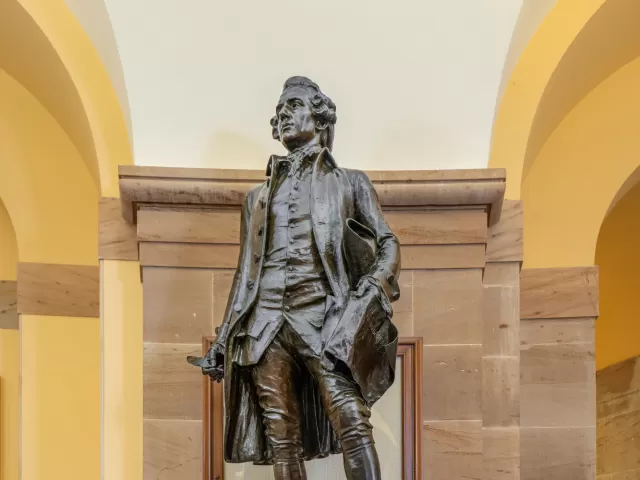Displaying 901 - 930 of 1034 Clear
Highlight
This statue of Huey Pierce Long was given to the National Statuary Hall Collection by Louisiana in 1941. Long served as governor of Louisiana and as a member of the U.S. Senate.
Highlight
This statue of Jacob Collamer was given to the National Statuary Hall Collection by Vermont in 1881.
Highlight
This statue of Jacques Marquette was given to the National Statuary Hall Collection by Wisconsin in 1896.
Highlight
This statue of James Zachariah George was given to the National Statuary Hall Collection by Mississippi in 1931.
Highlight
This statue of James Garfield was given to the National Statuary Hall Collection by Ohio in 1886. Garfield was the 20th President of the United States, serving from 1881 until he died from a gunshot wound 200 days later.
Highlight
This statue of George Washington was given to the National Statuary Hall Collection by Virginia in 1934. After serving as commander of the Continental Army and presiding over the Constitutional Convention, George Washington was unanimously elected the first President of the United States.
Highlight
This statue of George Laird Shoup was given to the National Statuary Hall Collection by Idaho in 1910. Shoup was the first governor of the state of Idaho and served in the U.S. Senate.
Highlight
This statue of George Clinton was given to the National Statuary Hall Collection by New York in 1873. Clinton was the first governor of the state of New York.
Highlight
Missouri gave this statue to the National Statuary Hall Collection in 1899. Alexander Doyle (1857-1922) sculpted three statues in the collection, contributed by Missouri and West Virginia.
Highlight
This statue of Francis Harrison Pierpont was given to the National Statuary Hall Collection by West Virginia in 1910.
Highlight
This statue of Frances Willard was given to the National Statuary Hall Collection by Illinois in 1905. Her statue was the first honoring a woman to be chosen for the collection.
Highlight
This statue of Florence Sabin was given to the National Statuary Hall Collection by Colorado in 1959.
Highlight
This statue of Helen Keller was given to the National Statuary Hall Collection by Alabama in 2009. Keller's statue replaced a statue of Jabez Lamar Monroe Curry, which Alabama had donated in 1908.
Highlight
This statue of Hannibal Hamlin was given to the National Statuary Hall Collection by Maine in 1935.
Highlight
Gerald Ford, 38th president of the United States, was the first person to assume the offices of vice president and president upon the resignation of his predecessors. This followed upon 25 years of service in Congress, including eight as House minority leader.
Highlight
This statue of Father Junipero Serra was given to the National Statuary Hall Collection by California in 1931. He is recognized as one of the most important Spanish missionaries in the New World.
Highlight
This statue of Edward Douglass White was given to the National Statuary Hall Collection by Louisiana in 1955. White served in the U.S. Senate and on the Supreme Court.
Highlight
This statue of Edward Lewis Bartlett was given to the National Statuary Hall Collection by Alaska in 1971. Bartlett served as Alaska's first senator after the state's admission to the union in 1959.
Highlight
This statue of Ephraim McDowell was given to the National Statuary Hall Collection by Kentucky in 1929.
Highlight
This statue of Ernest Gruening was given to the National Statuary Hall Collection by Alaska in 1977. Gruening served as governor of Alaska and as a U.S. Senator.
Highlight
This statue of Esther Hobart Morris was given to the National Statuary Hall Collection by Wyoming in 1960. Morris is honored as a pioneer for women's suffrage.
Highlight
This statue of Ethan Allen was given to the National Statuary Hall Collection by Vermont in 1876. He is best remembered as the Founder of the State of Vermont.
Highlight
This statue of Eusebio Kino was given to the National Statuary Hall Collection by Arizona in 1965.
Highlight
This statue of Father Damien was given to the National Statuary Hall Collection by Hawaii in 1969. He devoted his life to ministry for people with leprosy.
Highlight
This statue of Alexander Hamilton Stephens was given to the National Statuary Hall Collection by Georgia in 1927. Stephens was a dedicated statesman, an effective leader and a powerful orator.
Highlight
This statue of Andrew Jackson was given to the National Statuary Hall Collection by Tennessee in 1928.
Highlight
This statue of Brigham Young was given to the National Statuary Hall Collection by Utah in 1950. Young was the first governor of the Utah Territory and a religious leader.
Highlight
This statue of Caesar Rodney was given to the National Statuary Hall Collection by Delaware in 1934.
Highlight
North Carolina gave this statue to the National Statuary Hall Collection in 2024.
Highlight
This statue of Charles Carroll was given to the National Statuary Hall Collection by Maryland in 1903. Carroll was a statesman and signer of the Declaration of Independence.
